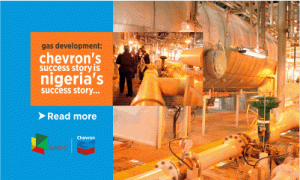Nigeria stands to gain a lot as soon as the upcoming Nigerian Liquefied Natural Gas (NLNG) Train 7 is activated by the highly expected Final Investment Decision (FID). This was the position of the Executive Secretary, Nigeria Content Development and Management Board (NCDMB), Mr Simbi Wabote, at the just concluded 9th Practical Nigeria Content Forum in Bayelsa on Saturday.
In his submission, he revealed that “The upcoming Nigerian Liquefied Natural Gas (NLNG) Train 7 will boost revenue generation and boost jobs with not less than 10,000 employment windows.
Federal Government had repeatedly informed Nigerians that all is set for the NLNG Final Investment Decision (FID) on Train 7 before Dec. 31st.
According to Wabote, “To the Nigerian economy, as you are aware, it will bring more revenue to the country; more taxes would be paid and, to the economy, it means a lot.
“To Nigerians, it also means a lot. It means creation of jobs. As you have heard, we will have about 10,000 direct jobs that will be created as a result of the Train 7 project.
“What that translates to is almost 40,000 indirect jobs that would be created,’’ he said
While noting that Train 7 will rejuvenate the economy, elated Wabote said a lot of upstream projects would also come up as a result of the project.
However, the African Energy Chamber (AEC), the continent’s leading energy experts group in its latest report, is disturbed on the observed delay in the FID of Train 7, saying it is holding back other projects that could provide feedstock to the facility.
The Train 7 project will increase the NLNG’s production capacity by 35 per cent from 22 metric tonnes per annum to 30 MTPA, according to the company.
Explaining more in its African Energy Outlook 2020, AEC averred that “There is growing momentum in Nigerian gas but delays in the FID on the Train 7 liquefaction facility is holding up other projects which could provide feedstock to the facility, for example Shell’s offshore OML 77.
“However, following FID in December 2018, Shell’s onshore Assa North Gas Project could add up to 600 million standard cubic feet per day once fully developed, with the capacity to expand to 1.2 billion scf/d (around 200,000 barrels of oil equivalent per day).”
According to the report, as of the end of first half of 2019, there were 46 oil projects under development across sub-Saharan Africa.
AEC report further recalled that “Nine of these are planned (that is reached FID), the rest have been announced, with varying prospects for reaching the FID in the near term. Nigeria accounts for half of all these projects, with Angola being the second most active market, followed by Chad.









